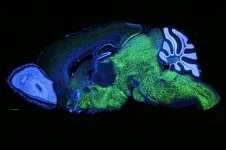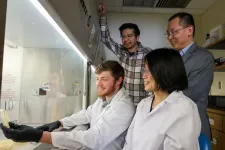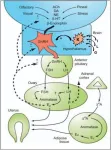(Press-News.org)
ARLINGTON, Va. (Feb. 18 2025) – A new study led by Conservation International scientists and published today has found that grassland restoration can reduce human-wildlife conflict and social conflicts in communities facing resource scarcity.
Grasslands, vital ecosystems for livelihoods and biodiversity, are under increasing pressure from climate change and human activity. The Chyulu Hills region of Kenya exemplifies these challenges, as it is home to iconic wildlife such as African elephants and black rhinos, which share the land with pastoral Maasai communities. This coexistence often leads to competition over limited water, land and pasture, sparking conflicts between humans and wildlife, and within the community itself.
The study, published in Frontiers in Environmental Science, was conducted over 16 months in Chyulu Hills to assess how restoring degraded grasslands influences conflict dynamics among local Maasai people and wildlife. Data collected from over 1,500 households indicate a significant correlation between the expansion of restored grassland areas and a reduction in human-wildlife and social conflicts.
Key findings include:
A decrease in human-wildlife and social conflicts as grassland restoration progressed, suggesting that enhanced resource availability reduces competition and tension.
A decline in reported feelings of insecurity among community members over time, corresponding with the benefits of restored ecosystems.
Identification of gender-specific conflict patterns, with women-led households experiencing higher rates of social conflicts, emphasizing the need for tailored solutions.
“We know now that the number of reported human-wildlife conflicts decreased as the restored areas increased, showing that grassland restoration is likely to play some role in reducing human-wildlife conflicts,” said Camila Donatti, lead researcher and senior director for climate change adaptation at Conservation International’s Moore Center for Science. “We already knew that lack of healthy grasslands increases instances of conflict, but the potential of restored grasslands to reverse this trend had not been widely explored. It's heartening to see that repairing environmental damage can improve overall quality of life, protect wildlife and undo some of the less visible impacts of climate change.
Grassland restoration (and protection) is a nature-based climate solution that can help communities better adapt to a changing climate. Conservation International’s work in Chyulu Hills an effort, supported by Apple, that has restored 11,000 hectares of degraded rangeland to date. The project aims to restore 20,000 hectares by 2027.
Conservation International’s work in Chyulu Hills also includes a carbon credit project that raises funding for forest protection, livelihood support, and improved grassland health.
“Grassland restoration is helping to restore balance to our land and our people,” said Samson Parashina, Chairman of Maasai Wilderness Conservation Trust. “With healthier pastures, we see fewer conflicts—both with wildlife and within our own community. While challenges remain, having more grazing land means less competition, making it easier for people and wildlife to share the land without constant struggle.”
Donatti added, “Our findings are very promising, and we want to continue exploring the potential of grassland restoration for climate mitigation, adaptation and biodiversity. We recommend continuing to track human-wildlife conflicts in the restored grassland areas, as well as the status of restored grasslands, while also scaling up habitat restoration efforts in new areas experiencing concerning human-wildlife conflict trends, like Chyulu Hills. There’s so much potential to foster human security and consequently protect wildlife through grassland restoration.”
For more about Conservation International’s work in the Chyulu Hills and Maasai Mara region of Kenya:
The giving trees: In Kenya, forests keep communities from the brink
When COVID halted wildlife tourism in Kenya, one area weathered the storm
In Kenya, global crises sparked ‘a new way to do conservation’
Chyulu Hills Carbon Project Impact Report
###
About Conservation International: Conservation International protects nature for the benefit of humanity. Through science, policy, fieldwork and finance, we spotlight and secure the most important places in nature for the climate, for biodiversity and for people. With offices in 30 countries and projects in more than 100 countries, Conservation International partners with governments, companies, civil society, Indigenous peoples and local communities to help people and nature thrive together. Go to Conservation.org for more, and follow our work on Conservation News, Facebook, Twitter, TikTok, Instagram and YouTube.
END
Some people wake up vividly recalling their dreams from the night, and can tell precise stories experienced during the night, while others struggle to remember even a single detail. Why does this happen? A new study, conducted by researchers at the IMT School for Advanced Studies Lucca, and published on Communications Psychology explores the factors that influence so called "dream recall"— the ability to remember dreams upon awakening—and uncovers which individual traits and sleep patterns shape this phenomenon.
The reason why there is such a difference in recalling dreams remains a mystery. Some studies found that women, young persons, ...
The immune systems of cancer patients are highly disrupted, with those who have a higher number of immune cells in their blood having a better survival rate, finds a new study that uses a pioneering technique developed by researchers at UCL and the Francis Crick Institute.
The tool, described in Nature Genetics, is called Immune Lymphocyte Estimation from Nucleotide Sequencing (ImmuneLENS). It enables researchers to calculate the proportion of T cells and B cells (types of immune cell) from whole genome sequencing (WGS) data for the first time.
Whole genome sequencing (WGS) uses a blood sample to create a complete ...
*** Embargoed for release until Tuesday, Feb. 18, 2025, at 5 a.m. EST ***
A newly identified part of a brain circuit mixes sensory information, memories, and emotions to tell whether things are familiar or new, and important or just “background noise.”
Led by researchers from NYU Langone Health, the work found that a circuit known to carry messages from a brain region that processes sensory information, the entorhinal cortex (EC), to the memory processing center in the hippocampus (HC) has a previously unrecognized pathway that carries messages directly back to the EC.
Publishing online Feb. 18 in Nature Neuroscience, the study results show that this direct feedback ...
The origins of human language remain mysterious. Are we the only animals truly capable of complex speech? Are Homo sapiens the only hominids who could give detailed directions to a far-off freshwater source or describe the nuanced purples and reds of a dramatic sunset?
Close relatives of ours such as the Neanderthals likely had anatomical features in the throat and ears that could have enabled the speaking and hearing of spoken language, and they share with us a variant of a gene linked to the ability to speak. And yet it is only in modern humans that we find expanded brain regions that are critical for language production and comprehension.
Now researchers from The Rockefeller University ...
SEATTLE – Scientists have developed a breakthrough method to track diet using stool metagenomic data.
Developed by researchers at the Institute for Systems Biology (ISB), the new method, called MEDI (Metagenomic Estimation of Dietary Intake), detects food-derived DNA in stool samples to estimate dietary intake. MEDI leverages stool metagenomics, which refers to sequencing all the DNA present in fecal samples (including microbial, human, and food-derived DNA). This non-invasive, data-driven approach offers an objective alternative to traditional food diaries and questionnaires, ...
Hundreds of different species of microbes live, laugh, and love in your gut. In the future, one of these might serve a new function: microscopic in-house pharmacist.
A new study published Feb. 18 in Nature Biotechnology shows how gut bacteria can be directed to produce and release proteins within the lower gastrointestinal tract — eliminating a major roadblock to delivering drugs to that part of the body.
Oral medication is the most common and practical means of drug administration, but the stomach doesn’t let much pass through unscathed. This is good when it comes to things like foodborne ...
The effectiveness of a common drug to quit smoking could be down to people’s genes, according to a study from the University of Leicester (United Kingdom).
Varenicline is widely recognised as the most effective medication for helping people stop smoking, but unfortunately it does not work for everyone.
Researchers from Leicester have uncovered important insights into how people’s DNA affects their response to the drug, which will soon be available to smokers through the UK’s National Health Service (NHS).
Varenicline ...
MONTREAL, Québec, Canada, 18 February 2025 - A comprehensive review published today in Brain Medicine by leading neuroendocrinologist Professor Hyman M. Schipper from McGill University’s Department of Neurology and Neurosurgery maps out the extensive influence of reproductive hormones on neurological health and disease. This landmark review, appearing in a special Festschrift issue honoring Dr. Seymour Reichlin’s centennial, systematically examines how sex hormones affect a broad ...
Across Kenya, grasslands underpin people’s lives — as well as those of animals like elephants, giraffes, and hyenas. But the climate crisis is drying out these habitats, forcing people and animals to compete for resources, and increasing both community tensions and conflict between humans and wildlife. Researchers monitoring both grassland restoration and conflicts have now found that restoration can help reduce human-wildlife conflict and improve community relations: the more local grassland is restored, the less conflict there is.
“Grassland restoration is playing a role in reducing human-wildlife conflicts, social conflicts and the overall feeling of insecurity ...
Bioaerosol emissions during toilet flushing are an often-overlooked source of potential health risks in shared public facilities. A new study published in Risk Analysis found that bioaerosol concentrations of two bacteria -- Escherichia coli (E. coli) and Staphylococcus aureus (S. aureus) -- exceeded acceptable levels established by the Centers for Disease Control (CDC) after toilet flushing. Inhaling these biological particles can produce symptoms like abdominal cramps, nausea, diarrhea, and vomiting.
The research was conducted in two restrooms located in an office building in China. One contained a squat toilet and the other a bidet toilet. Scientists measured the emissions ...


